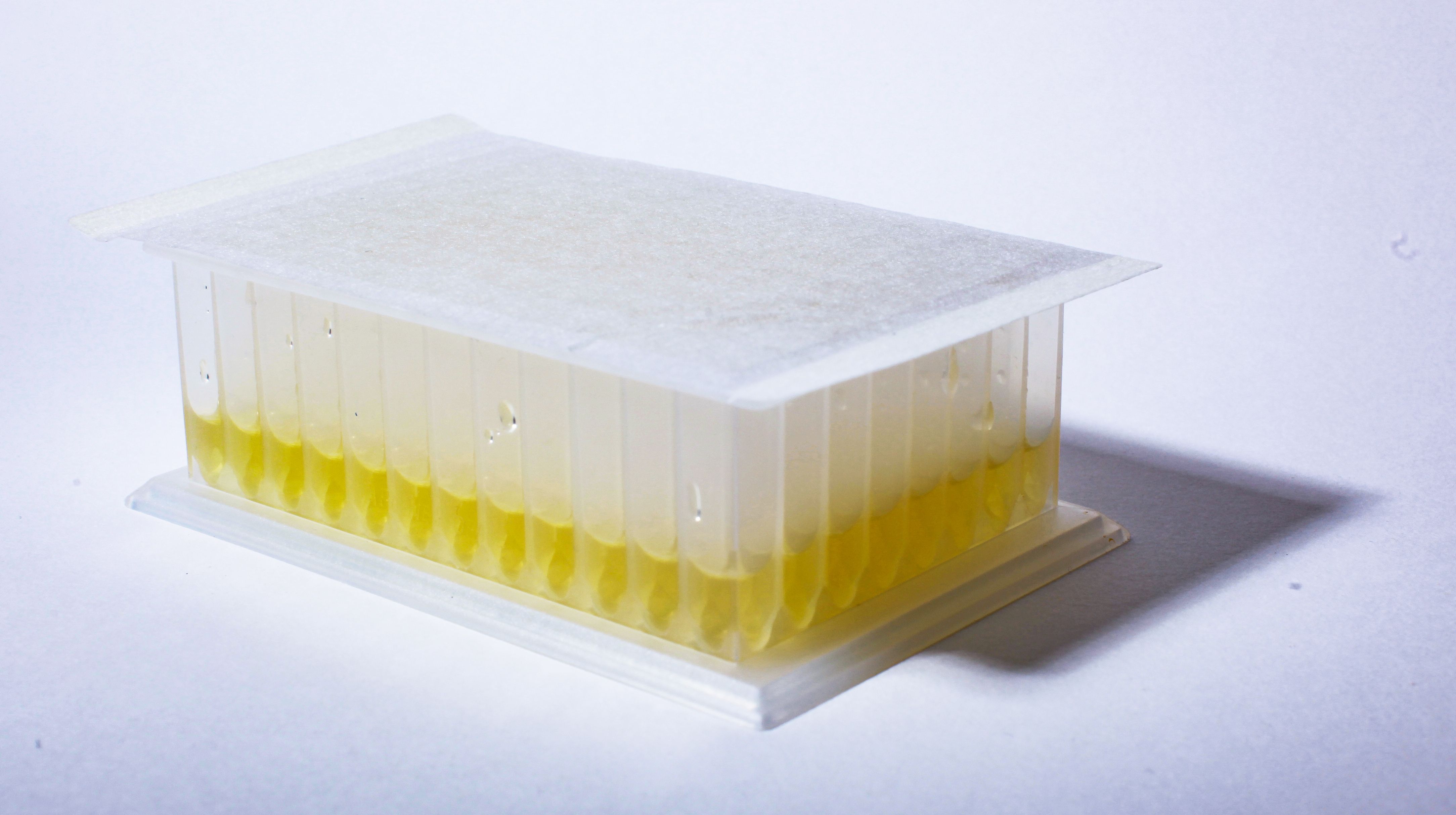
Multi-species bacterial communities bounce back from environmental disturbances
An international study with participation from Konstanz shows that species immigration is beneficial for community recovery.
Perturbations in the environment are common, and communities consisting of several species seem to find their way around the crisis. Scientists from the University of Konstanz, Germany, and the universities in Helsinki and Turku, Finland, used bacteria as an example to study how communities consisting of several species respond to disturbances in an laboratory experiment. Similar kinds of disturbances can occur in the human gut when antibiotic medication is applied, resulting for example, in diarrhoea.
The interdisciplinary team of researchers examined how a 34-species bacterial community could cope with an antibiotic pulse. The results are available in the Nature Ecology and Evolution issue from 10 August 2020. They used three antibiotic levels together with an antibiotic-free control treatment and followed how the composition of the bacterial community changed upon antibiotic exposure and how the bacterial community responded once the antibiotics were removed. They found that some bacteria species were favoured by the antibiotics while others declined in their numbers and that the magnitude of the changes was bigger the higher the antibiotic level.
"Quite surprisingly, we observed that the composition of the community recovered reasonably close to the initial state despite the strong effect of the antibiotics on the bacterial growth. Only in the highest antibiotic level used in the experiment we observed that some bacteria did not recover and were lost from the community, which prevented the recovery to the initial state,” says limnologist Professor Lutz Becks from the University of Konstanz. “But even these communities were able to recover to the initial community composition when we allowed the reintroduction of a small inoculum of the original community at regular intervals.”
As a novelty, the researchers used a custom-built controlled laboratory bacteria community with a high level of replication. Most previous studies on this topic have been observational studies limited to the detection of associations and potentially subject to confounding environmental factors. Another key finding of the study was that replicate communities within the same experimental treatments responded to the treatments in a relatively repeatable fashion. This could be partly explained by the relevant, heritable traits growth rate and antibiotic susceptibility, measured separately for each species in the community.
Lutz Becks: “This indicates that in certain cases the community response to perturbations may be predictable in the future, even though we could not explain the repeatability well enough to develop predictive models in this study. Developing such predictive models for community responses to perturbations is important as perturbations are common and are likely to be even more frequently observed”.
Facts:
- Johannes Cairns, Roosa Jokela, Lutz Becks, Ville Mustonen, Teppo Hiltunen: Repeatable ecological dynamics govern the response of experimental communities to antibiotic pulse perturbation. Nature Ecology and Evolution, 10 August 2020 https://doi.org/10.1038/s41559-020-1272-9
- International study with participants from Konstanz shows that the diversity of bacteria species is beneficial for the recovery of their community.
- Involved are the research team of limnologist Professor Lutz Becks at the University of Konstanz and teams from the universities in Helsinki and Turku, Finland.
